1st December 2020
“Remembering our dad, K.Amarnath, today on his 106th Birth Anniversary”
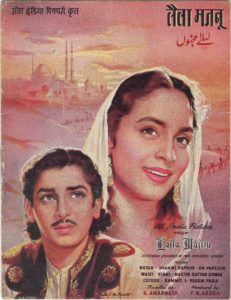
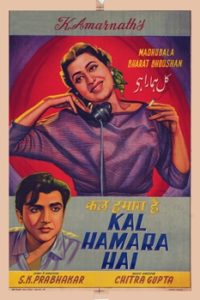
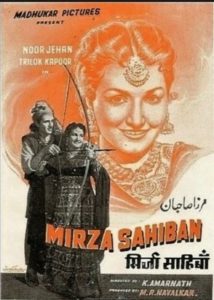
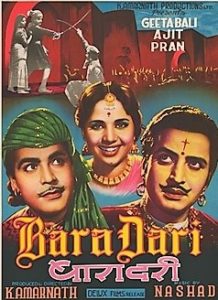
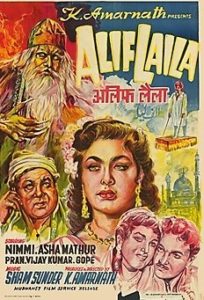
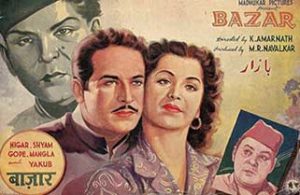
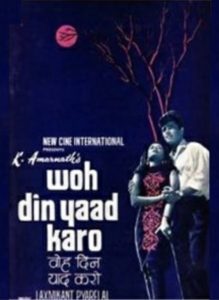

Once again, the subject of my post today is:
“Songs from my dad, K. Amarnath’s Films”
Recently, listening to some old Indian movie songs on the net, I came across an amazing analysis of a super hit song, “Chal diya Karavan” from “Laila Majnu”, a 1953 film directed by my dad.
It was on YouTube and the comment was penned by music enthusiast Priya of “Priya MyMusicalHeaven”.
I got in touch with her, expressed my admiration for her wonderful review of the song, and requested her permission to use some of the excerpts from her write-up for my website.
She very graciously replied : “ I am truly humbled. Sure… please go ahead and use whatever excerpt you wish to use from my comment for your website — I would be honored!”
Her comments are very beautifully and emotionally expressed. She has subtly captured the finer details of all aspects of the song. It feels as though she was present right there during the recording and shooting of the song!! Her in-depth analysis makes you appreciate the song even more and inspires you to watch the video again – not just superficially, but from her enhanced point of view.
Priya has in fact reviewed quite a few songs from my dad’s movies. So, I decided, with her consent, to devote today’s entire post to her wonderful write-ups on YouTube.
Thank you very much Priya MyMusicalHeaven – the songs you have chosen to comment on are truly heavenly !!
———-
Below is a compilation of some excerpts from Priya’s comments on 9 of the songs from my dad, K.Amarnath’s movies.
———-
“Chal Diya Karavan”
Laila Majnu – 1953
YouTube link
An utterly moving song… in fact, an utterly moving piece of cinematic art !
The lone figure of Qais walking on the sand dunes in the empty vastness of the desert in the distance, juxtaposed against the slow-moving qaafilaa makes this scene quite touching.
Add Shammi Kapoor’s and Nutan’s expressions of deep pain of separation, it becomes all the more moving.
Despite extreme dejection, despondency, anguish, and pain of losing the beloved forever, tears have almost dried up in Majnu’s eyes, so it seems…. for he has shed so many that there aren’t any left. What is left is the “dhuaan” of his desolate, burning heart, his aashiyaan… and emptiness, in his heart and soul. After all, his “zindagi” is leaving him forever — simple yet effective lyrics from Shakeel Badayuni’s pen.
Excellent direction, acting, and cinematography !
The story of Laila and Majnu is all too well-known like some other love-stories — what makes it long-lasting is the way it ends, its tragedy, and also the fact that it has been used as a film-subject repeatedly.
When a subject is handled well by all involved in film-making, it becomes more effective — we see a part of that in this song and scene.
The song itself might have created a deep and long-lasting impact on some listeners for its lyrics soaked in the feelings of a heartbroken and desolate Majnu, its beautiful music, and for its soulful rendition.
What a sublime melody Ghulam Mohammed created ! The prelude, the interludes… the entire composition is very effective, so apt for these words. GM was very talented, but an under-rated music director ……
As far as rendition, Talat Mahmood’s voice and skills were so well-suited for such songs, and he also suffused them with deep feelings — singing for this genre was his forte….
———-
“Gham Ki Badli Mein Chamakta”
Kal Hamara Hai – 1959
YouTube link
Outstanding !
Such thought-provoking and inspiring words in the face of adversity… profundity in simplicity, that was Shailendra’s hallmark.
“Gham ki badli mein chamaktaa ek sitaara hai….. humko ghairon kaa nahin, apnaa sahaara hai, aaj apnaa ho na ho, par kal hamaara hai” — these words immediately made me recall the words the orphan Annie sang in the famous Hollywood film “Annie” — “O, the sun will come out, tomorrow, so you gotta hang on till tomorrow, come what may…. tomorrow, you’re only a day away.”….
The picture on the wall of Pt. J. L. Nehru reminds me of Robert Frost’s famous poem that was among his favorites, and is apt in the context of this song, “But I have promises to keep, And miles to go before I sleep, And miles to go before I sleep.” …
The contributions of Mohammed Rafi, Sudha Malhotra, and Chitragupta to the song speak for themselves.
———-
“Yeh Sach Hai Jahaan Walo”
Kal Hamara Hai – 1959
YouTube link
A gem of a song… it came back to me from faded memories of the radio times.
“Maray sau baar jeete jee, magar marnaa nahin aayaa” — so much has been said in these few simple words, of course, that is what we expect from Shailendra’s pen.
The entire song speaks of the anguish of a disheartened and dejected soul. Rafi, of course, expressed the sentiments aptly in this touching song….
Seems to me that this film had a progressive theme, perhaps made with an intent of aiding social reform….
———-
“Hath Seene Pe Jo Rakh Do”
Mirza Sahiban – 1947
YouTube link
Outstanding !
Such beautiful lyrics… expressing the feelings gracefully, with elegance. And a very lovely composition in which the sounds of the various instruments sound so pristine — lively in the prelude and interludes, it is sublime in the stanzas and supports the singers’ voices so well, never overwhelms them, instead, allows them to bring out the beauty of the lyrics.
As far as the singers, wouldn’t this be considered as one of the most beautiful duets from that era, and one of the best renditions of G. M. Durrani as well as Noorjahaan? Both of them rendered the song quite beautifully, suffusing it with apt feelings and softness that the words required, such a soft and soothing song from the romantic genre — kudos to all the artistes…..
———-
“Dard Bhara Dil”
Bara-Dari – 1955
YouTube link
“Dard-bharaa dil bhar-bhar aaye…” — in simple words, Khumar Barabankvi started this song beautifully, with “bharaa” and “bhar-bhar” in the same line, and it sounds as if Lataji added her own dard to it, affecting the listeners immediately. She was so skilled at suffusing the emotions in the songs, just the right level of them, not too much, not too less, and never dramatic, unless the song required it.
Nashaad created a beautiful, slow, and sublime composition for this pathos-filled song. “Dil se maen jitna unko bhulaaoon, aur bhii unki yaad sataaye” ……. “Aah na karnaa, aansu peenaa, khel nahin mar-mar ke jeenaa…” — indeed, many a people in a situation similar to that of the heroine would resonate with her feelings. And then, they may also feel, “jaise kalejaa niklaa aaye, sabr kaa daaman chhoot na jaaye”.
Patience is a characteristic necessary in every aspect of life, and in love, no amount of it is enough, as expressed by many a poet.
The gifted Geeta Bali enacted the song with natural ease; she was among those who made acting seem so simple. As she mimed the words of this song of heartache, she also smiled slightly at 0:17 and again at some places in the song — not sure if she was directed to act in this manner or she herself acted spontaneously; regardless, what it shows is that one can continue to smile even amidst adversities, and it also shows the positive attitude that can help one to survive the difficult circumstances….
———-
“Kya Raat Suhaani Hai”
Alif-Laila – 1953
YouTube link
A beautiful Shyam Sundar melody… the song is familiar to me; however, I hadn’t seen its video-clip before and had no idea it featured Asha Mathur as a princess; heard it today after more than a year. Indeed, the combination of the voices, the words, and the music may transport one to an imaginary ‘suhani raat’……
———-
“Sajan Ki Galiyan Chhod Chale”
Bazar – 1949
YouTube link
…This song may be quite touching, but it’s a most beautiful one. Qamar Jalalabadi’s words are fine, especially, “unke liye unko chhod diyaa…,” for it speaks of sacrifice, a sign of deep love, however, it’s Shyam Sundar’s beautiful, sublime melody and Lataji’s innocent and sweet-pathos-filled voice and deep-emotion-filled rendition that makes this song outstanding. A beautiful rhythm too… tabla has been played very well. The overall impact it creates lingers for a while.
Nigar Sultana was a good actress and charming too…
Though this film has an excellent soundtrack with some beautiful Lata Mangeshkar-Mohammed Rafi duets also, I wish to mention the all-female qawwaali, “Zaraa sun lo hum apne pyaar kaa afsaana kehte hain” that I love and the somewhat peppy, “Pee aaye, aakar chale bhee gaye, hum kehte reh gaye….” with an amusing “oh, I see” (smile?) enacted by Cuckoo on stage…. I believe, it was quite popular back in the day.
———-
“Mohabbat ki Kahaniyan”
Woh Din Yaad Karo – 1971
YouTube link
What a dig ! Nice duet ! … “Rahein yuun hameshaa saath hum, rahein na rahein zindagaaniyaan” — the beautiful sentiments of the two hearts in love here, wishing and wanting togetherness forever, instantly made me recall “Duniyaa hamaare pyaar kii…” from Lahore, a very sweet and a long-beloved duet, which also has the words kahaaniyaan and nishaaniyaan. ….
———-
“Aaja Re Tera Ek Sahara”
Baraat – 1960
YouTube link
Comment in Romanagiri – (Hindi written in Roman script)
“Tere binaa kaun jaane dard hamaaraa?” — karun aagrah, kuchh ulaahne, kuchh duniyaa kee salaah aur taanon kee chintaa, kuchh prashn, phir bhi, antatah vishvaas usi par jo chhodkar chalaa gayaa, aur iseeliye usi ke liye dil se nikli karun pukaar jismein virahini kee aas bhi sammilit hai. Inn sab bhaavon ke hotay hue bhi gaane mein maadhurya kee koii kami nahin hai. Hoti bhi kaise? Aakhir sangeet Chitragupt kaa hai aur swar Lataji ke…
Though this song is an expression of pain & anguish, there is a glimmer of hope and softness that permeates throughout the song. This total effect is achieved by the mellifluous composition of Chitragupt, the sweet voice of Lata Mangeshkar, the simple & touching lyrics penned by Majrooh Sultanpuri, and of course the on-screen acting of Shakila and direction of my dad, K.Amarnath.
———-
Songs were a highlight of K.Amarnath’s movies. This high standard was maintained due to his dedicated involvement in the composition and rendition of the songs. Most of his movie songs have stood the test of time and are labelled now as “classic”, “ever-green songs”.
![]()
REFERENCES & ACKNOWLEDGEMENTS |
|
MENU |
BACK TO TOP |
